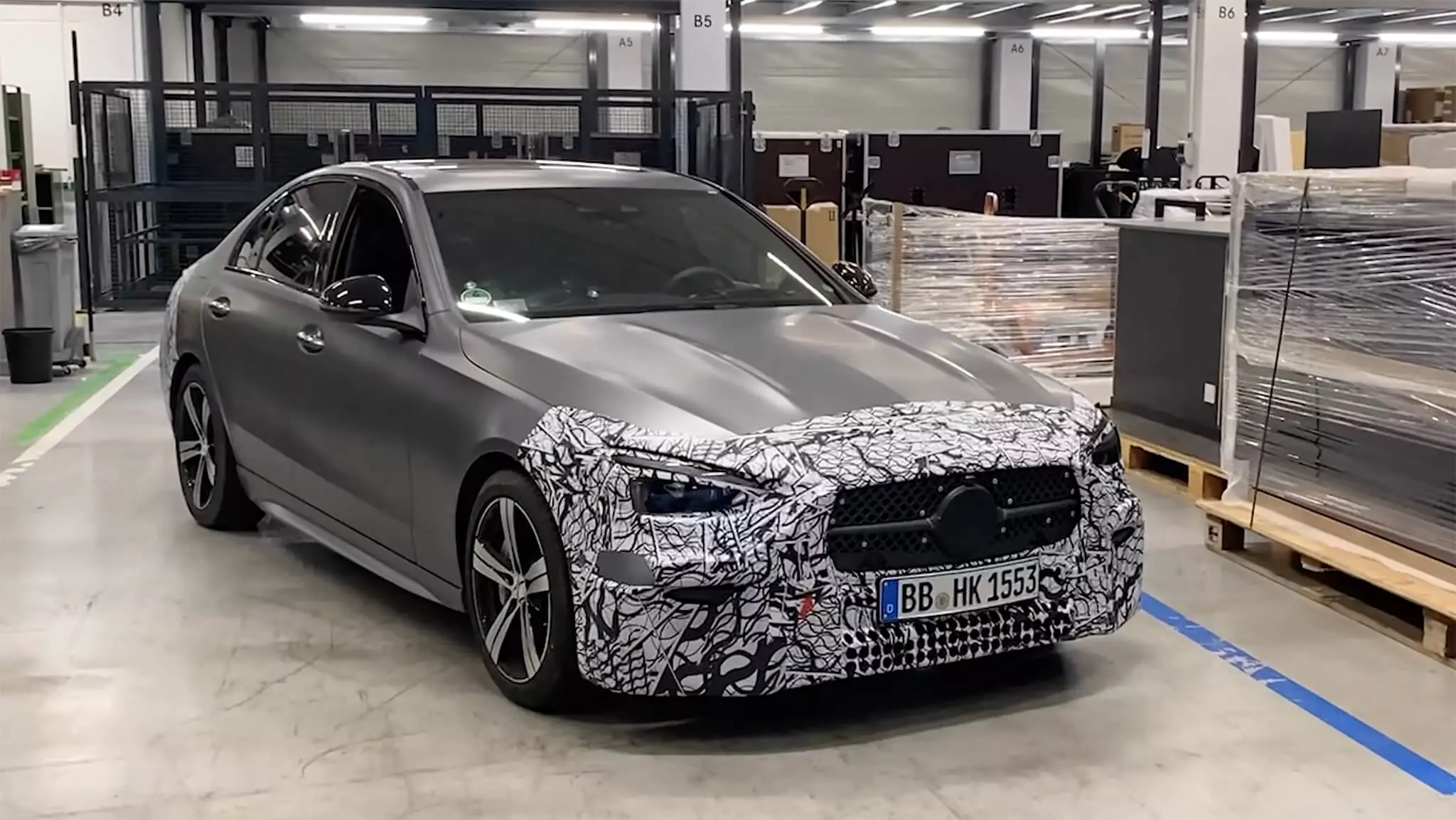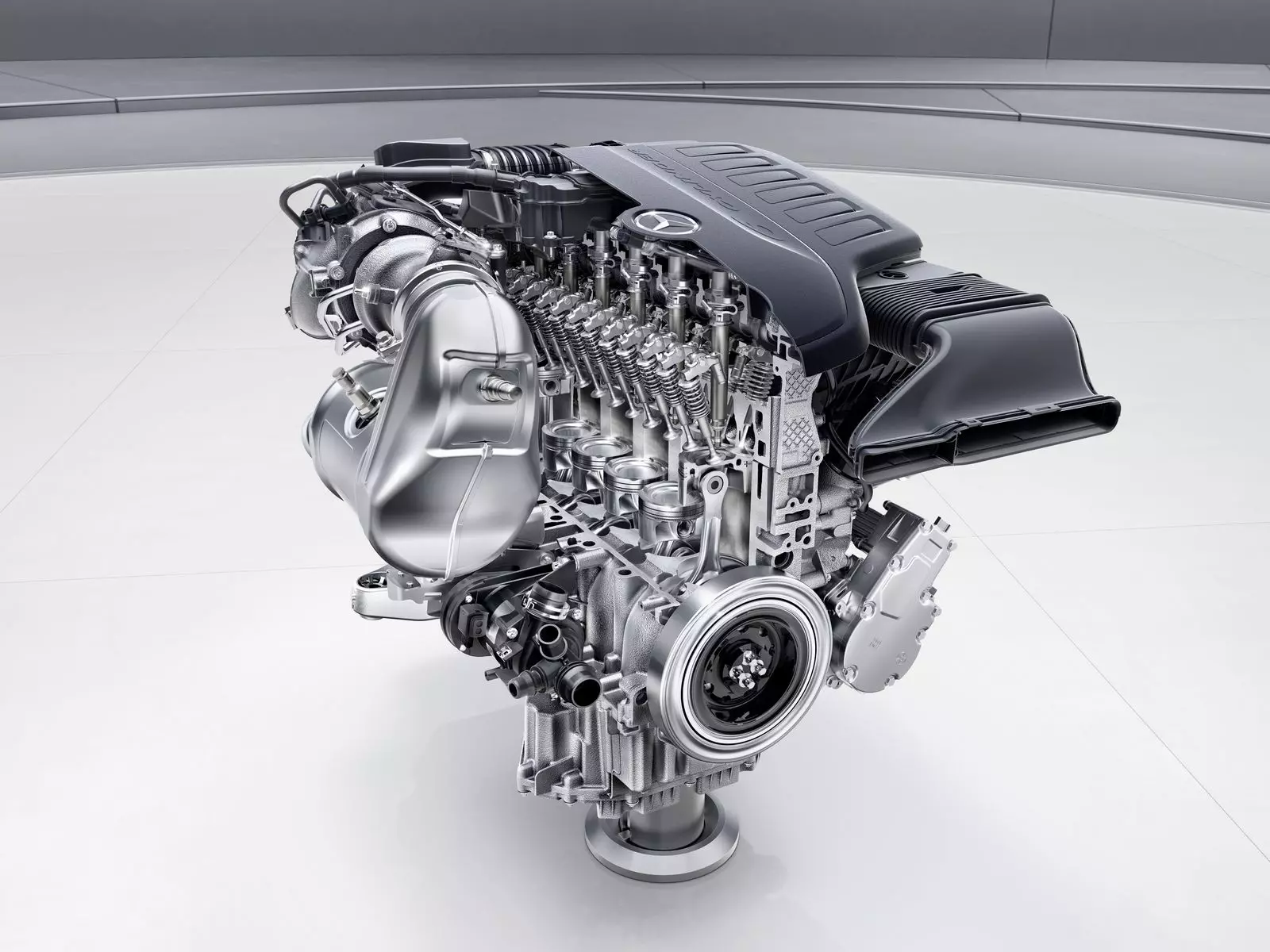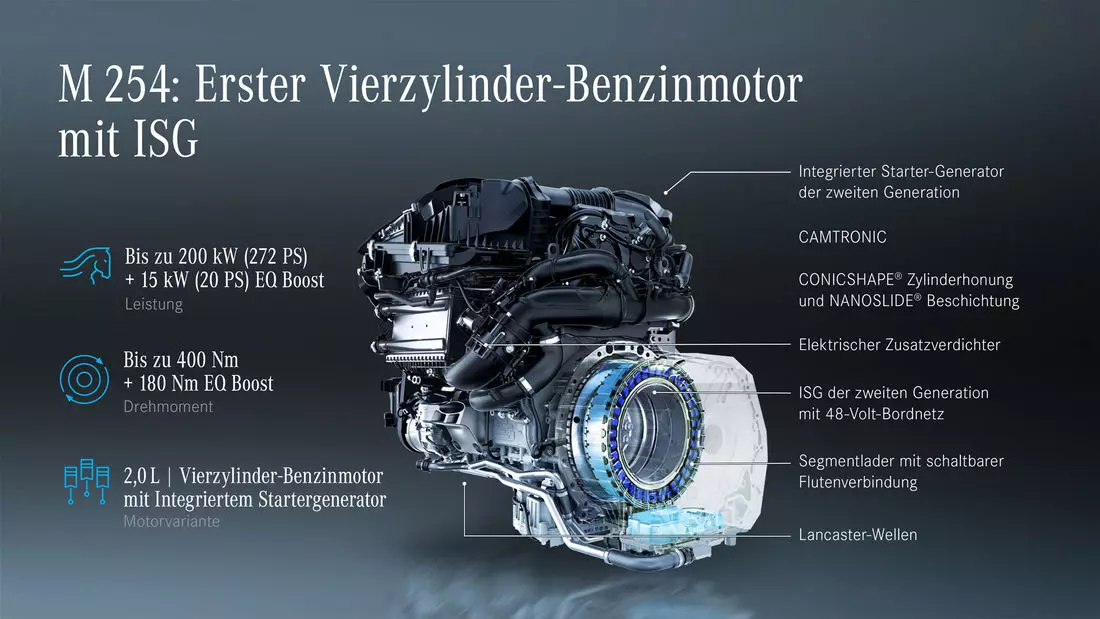The rumors were confirmed: the new Mercedes-Benz C-Class W206 will only feature four-cylinder engines, regardless of version. In other words, even the AMG-labeled variants will no longer resort to the V6 and V8 we used to know — yes, when we open the hood of the next C 63 we'll only see a four-cylinder engine.
To help understand such a radical decision, Christian Früh, the C-Class chief engineer, gave the motivations behind it to Automotive News.
And the obvious question is why opting for four-cylinder engines for the top versions, when Mercedes launched a few years ago, in 2017, a new inline six-cylinder (M 256) that could very well take the place of the previous ones. V6 and V8.

Interestingly, it becomes easier to justify the abandonment of the charismatic and thundering V8 in the C 63 for a “mere” four cylinders, even if it is not just any four cylinders. It is, after all, the M 139 — the most powerful four-cylinder in production in the world — the same one that equips, for example, the A 45 S. Even so, it's not the same as having eight cylinders “growling” ” threateningly ahead of us.
In the case of the C 63, it was the most effective way to reduce its high CO2 emissions, not only by using, essentially, half an engine than the one it had, but above all by using a plug-in hybrid system. In other words, the future C 63 should have power and torque numbers as large (or even a little higher, according to rumors) as the current model, but accompanied by much lower consumption and emissions.
too long
On the other hand, in the case of the C 43 — it remains to be confirmed whether it will keep the name or whether it will change to 53, as in other Mercedes-AMG —, the decision is due to another factor. Yes, reducing emissions is also one of the justifications for the decision, but the main reason is due to just one very simple one: the new inline six-cylinder simply doesn't fit in the engine compartment of the new C-Class W206.

The inline six cylinder is a block longer than, of course, the V6 and even the V8 (which isn't much longer than an inline four cylinder). According to Christian Früh, for the in-line six cylinders to fit, the front of the new C-Class W206 would have to be 50 mm longer.
Knowing that the new block is much longer, why not contemplated it during the development of the new C-Class? Simply because there was no need to resort to more than four-cylinder engines to get all the performance they wanted.
Subscribe to our newsletter
The difference in performance between the four-cylinder and six-cylinder blocks would be offset by the addition of plug-in hybrid models. What's more, according to Früh, these additional 50 mm would mean a higher load on the front axle, as it would impact the vehicle's dynamics.
The current C 43 makes use of a 3.0 twin-turbo V6 with 390 hp and it is to be expected that the new C 43 will have equal power, even though it is equipped with a smaller four-cylinder with just 2.0 l.

Intriguingly, it won't resort to the M 139, which we know can achieve these values — the A 45 in its regular version delivers 387 hp. Instead, the future C 43 will use the new M 254, introduced by the revised E-Class, which is part of the same modular family as the six-cylinder M 256 or even the four-cylinder OM 654 Diesel.
In common, they use a mild-hybrid system of 48 V, which includes a small electric motor of 20 hp and 180 Nm. In the E-Class, in the E 300, it delivers 272 hp, but in the C 43 it should reach the same 390 hp of the current one. Like? The house of Affalterbach (AMG) has some innovations in store for this engine, such as the addition of an electric turbocharger.
Even so, it would not surprise us that in the technical data sheet the future C 43 presents consumption and emission values higher than… C 63 (!) due to the different levels of electrification used.
